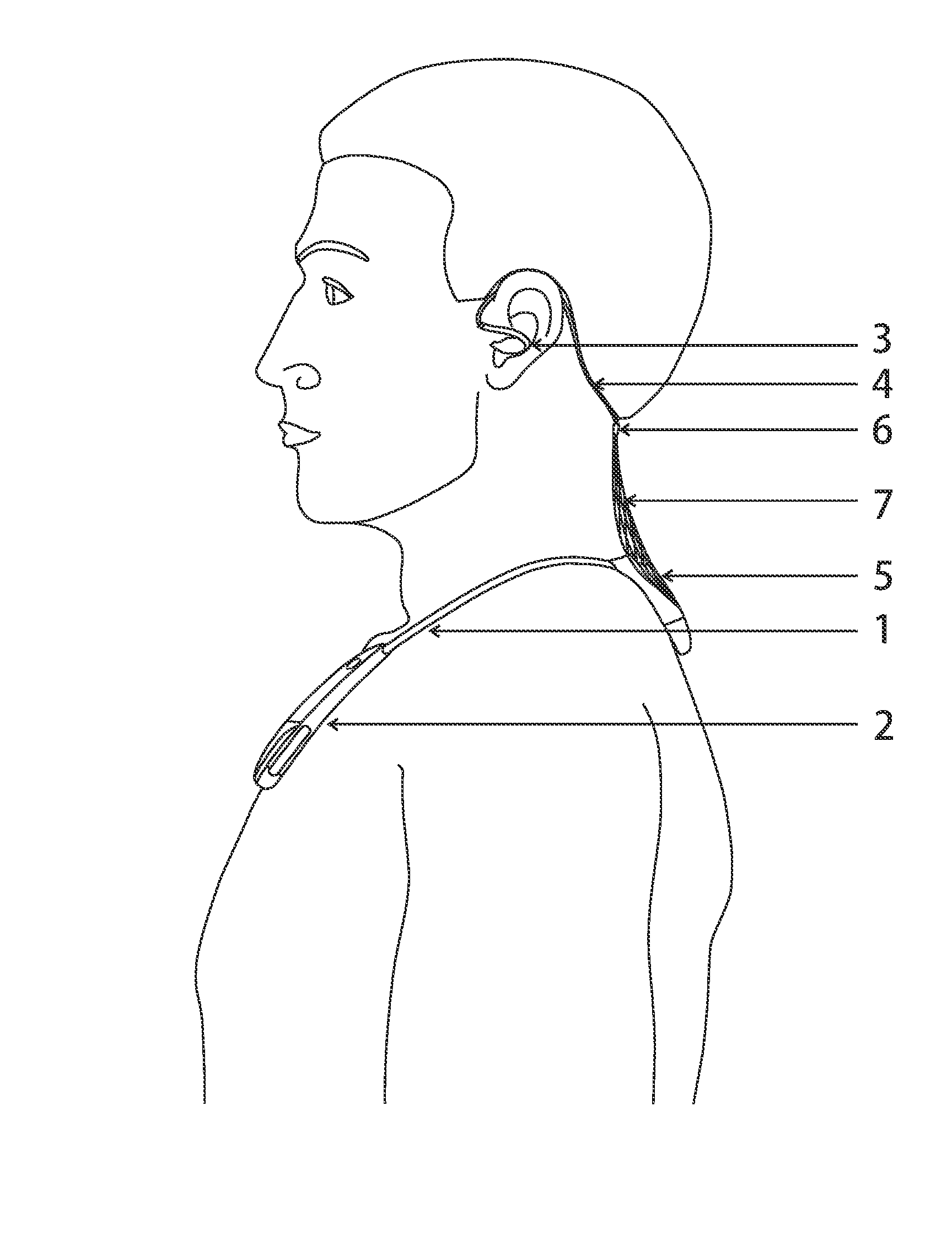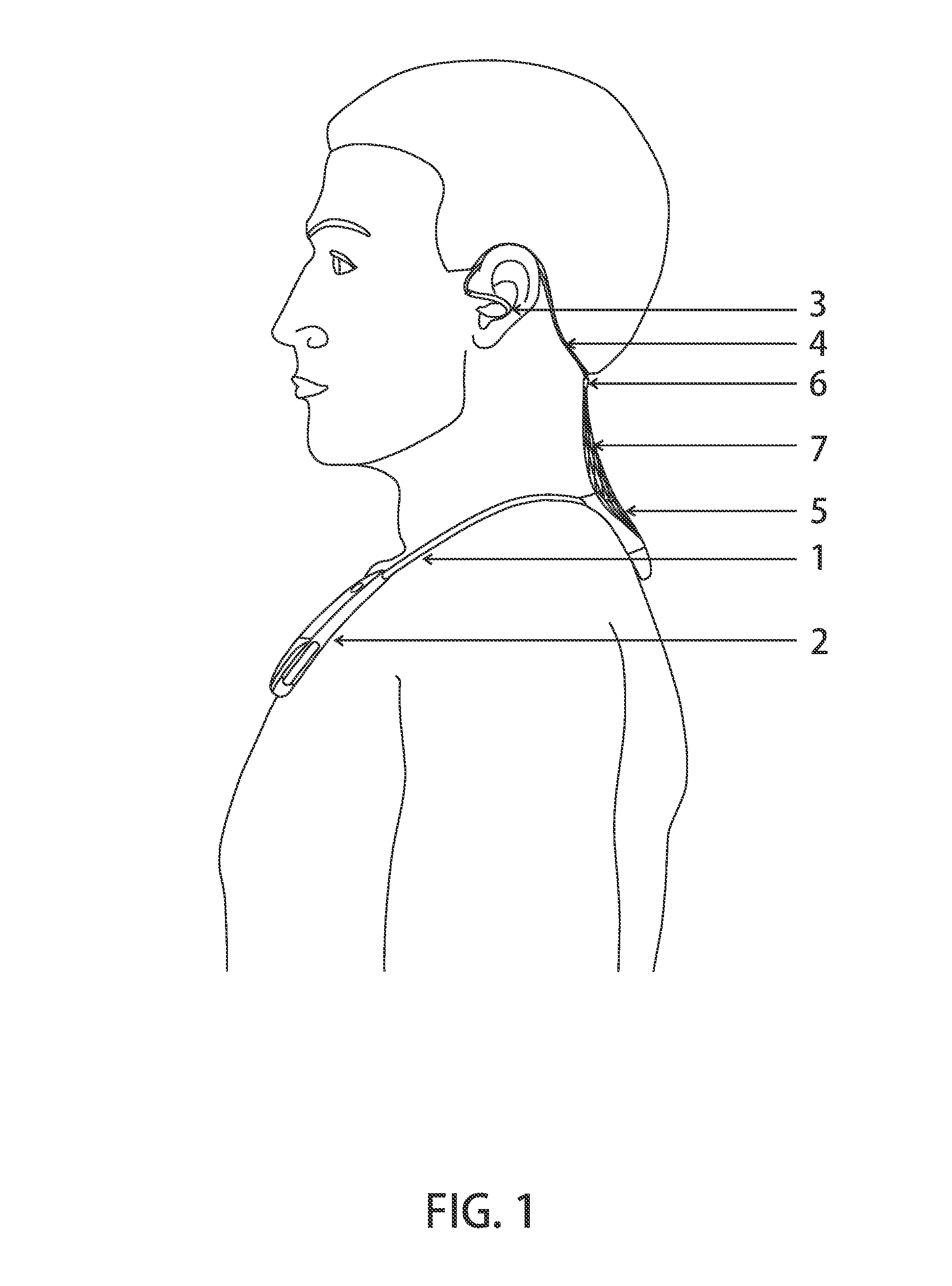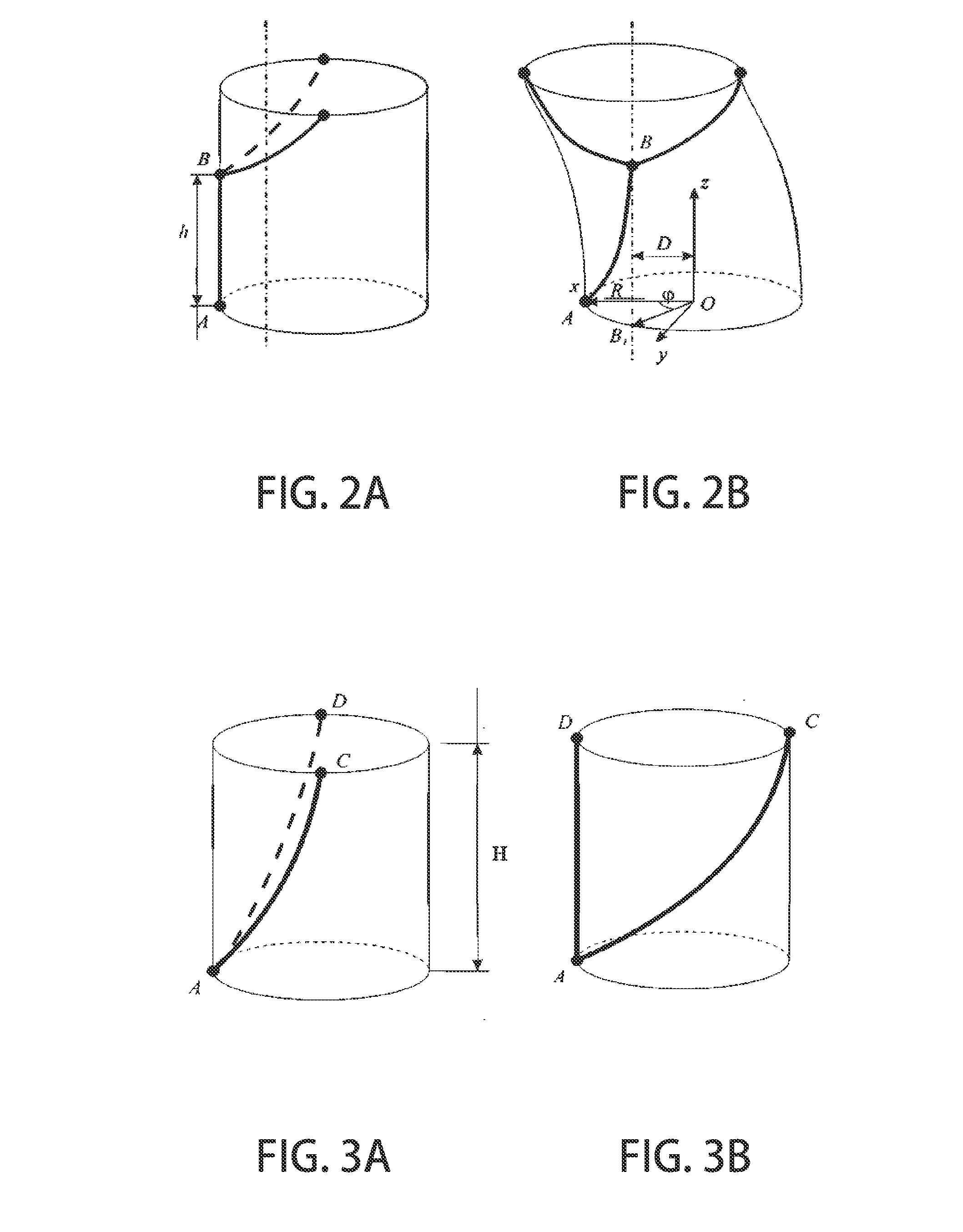Neck-wearable communication device with microphone array
a communication device and microphone array technology, applied in the field of telecommunication devices, can solve the problems of slack cords, difficult to wear headsets under clothing, earphone storage structures, etc., and achieve the effect of preventing substantial changes in user appearance, convenient use, and no restriction of user's movement freedom
- Summary
- Abstract
- Description
- Claims
- Application Information
AI Technical Summary
Benefits of technology
Problems solved by technology
Method used
Image
Examples
Embodiment Construction
[0135]Reference will now be made in detail to the preferred embodiments of the present invention, examples of which are illustrated in the accompanying drawings.
[0136]In order to assure wearing a device on the user's body without additional support, it is expedient to provide the device in the form of a loop or a half-loop.
[0137]When a user wears a headset with neck-wearable housing having a generally U-shape (FIG. 1), a node that connects earphone cords 5 to a neck-wearable housing 1 rests on the dorsal surface of the user's neck, in the region of the seventh cervical vertebra. Slightly lower on the human body, there is a deepening trough, lying between the spinous and transverse processes of the vertebrae, sulcus dorsalis, at the level of the second—third thoracic vertebrae in the interscapular region, where a depression of various depth of about 4×5 cm (depending on the user's constitution and development of subcutaneous fat) is formed at the place of attachment on the medial edg...
PUM
 Login to View More
Login to View More Abstract
Description
Claims
Application Information
 Login to View More
Login to View More - R&D
- Intellectual Property
- Life Sciences
- Materials
- Tech Scout
- Unparalleled Data Quality
- Higher Quality Content
- 60% Fewer Hallucinations
Browse by: Latest US Patents, China's latest patents, Technical Efficacy Thesaurus, Application Domain, Technology Topic, Popular Technical Reports.
© 2025 PatSnap. All rights reserved.Legal|Privacy policy|Modern Slavery Act Transparency Statement|Sitemap|About US| Contact US: help@patsnap.com



